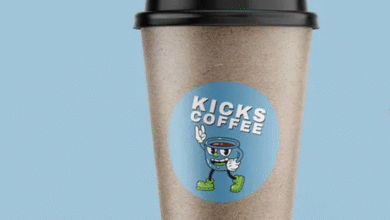Global Floor Cleaning Traditions and Cultural Practices

Around the world, different cultures have developed unique traditions for maintaining cleanliness, influenced by their history, environment, and social values. While modern cleaning products are common, many cultures still practice traditional methods that are deeply connected to their identity. Let us explore these unique cleaning rituals and their continuing relevance.
Cultural Cleaning Practices Across the Globe
Japan: The Art of Osouji
In Japan, “Osouji,” meaning “the big cleaning,” is an end-of-year tradition. People thoroughly clean their homes, schools, and workplaces. This is not just about tidying; it is a spiritual practice to purify spaces, welcome the New Year, and remove bad energy from the past year. Japanese families often scrub every part of their homes, including walls, ceilings, and floors, ensuring everything is spotless. This emphasis on minimalism and cleanliness reflects the broader cultural values of simplicity and respect for space.
Iran: Persian Rug Washing Traditions
Persian rugs are a symbol of Iranian culture, and their care is a ritual in itself. It is common for families in Iran to clean their Persian rugs before Nowruz, the Persian New Year, which symbolizes a fresh start. These rugs are often handmade, with intricate patterns and vibrant colors that can fade without proper care. Traditionally, families would wash rugs outdoors, using natural sunlight to dry them without damaging the fibers. Regular cleaning helps preserve their beauty and extends their lifespan.
India: Cleanliness as Worship
In India, cleaning rituals are linked to spiritual beliefs. Many households conduct thorough cleaning before Diwali, the festival of lights, to invite prosperity and good fortune. For many, cleanliness is also a form of worship. As part of their daily routine, Indian households commonly sweep, mop, and wash floors with water and natural disinfectants like neem leaves. This combination of spirituality and hygiene shows the importance of cleanliness in both physical and symbolic ways.
Morocco: Hammam Scrubs and House Cleansing
In Morocco, public bathhouses known as hammams are popular places for deep cleansing and rejuvenation. For centuries, Moroccans have visited hammams for exfoliating scrubs and steam baths, believing that these practices purify both the body and soul. Beyond personal cleansing, Moroccan households also have their own cleaning traditions, with women typically cleaning their homes weekly. The focus on natural ingredients, like black soap and olive oil, reflects a cultural preference for organic cleaning materials.
See also: Technology in Commercial Cleaning: Innovations Shaping the Industry
United States: Spring Cleaning Tradition
The spring cleaning tradition in the United States has roots in historical practices of thoroughly cleaning homes after long winters. Today, it remains a popular annual ritual, symbolizing a fresh start. People often declutter their spaces, clean carpets, and wash windows to let in more natural light. Professional cleaning assistance can be especially helpful for deep-cleaning tasks. Professional advice can make a significant difference in maintaining home surfaces, especially when dealing with stubborn dirt or delicate materials.
Sweden: The Weekly Cleaning Day (Städdag)
In Sweden, cleanliness is highly valued, and many households have a “Städdag” or “cleaning day,” usually scheduled weekly. Swedes focus on maintaining organized, clutter-free environments, consistent with their minimalist design preferences. In apartment buildings, there is often a communal cleaning system, where residents share the responsibility of keeping shared spaces tidy. This emphasis on communal cleanliness fosters a sense of community and respect for shared spaces.
Kenya: Brooms Made from Local Materials
In Kenya, sweeping is an essential part of daily life, with most households using brooms made from natural materials like coconut palm leaves or sisal. Kenyan communities prioritize both indoor and outdoor cleanliness, sweeping yards and entryways regularly to keep dirt and dust at bay. This cleaning method not only maintains hygiene but also strengthens the connection to local, sustainable resources.
Italy: Outdoor Cleaning and Community Pride
In Italian towns and cities, it is common to see residents sweeping and washing the streets outside their homes or shops. This tradition fosters a strong sense of pride and responsibility in keeping communal areas clean and inviting. Particularly in southern Italy, the use of water and natural soap to wash outdoor steps and sidewalks is a centuries-old custom. It reflects the Italians’ attention to detail and appreciation for aesthetic beauty.
Germany: Kehrwoche
In Germany, Kehrwoche, which translates to “week of sweeping,” is a communal cleaning process for those in apartment buildings. Cleaning tasks throughout the week are distributed among residents. These tasks include sweeping, mowing grassy areas, decluttering, and cleaning windows. This refers to a weekly communal cleaning effort to keep the community clean.
Panama: Saging on New Year’s Eve
On New Year’s Eve, Panamanians open all windows and sage their houses. Practiced globally, including in Native American cultures, saging is believed to remove bad energy. The process involves decluttering and cleaning thoroughly to leave the past year behind and invite positivity. To sage the Panamanian way, walk through each room moving the smoke to dispel bad energy. Use smudge white sage for this purpose.
China: Deep Cleaning Before the New Year
In Cantonese tradition, families deep clean their homes on December 28. This symbolizes washing away the dirt from the previous year to start anew. The process includes sweeping, tidying up the outside and entranceway, and fixing any broken items. A clean home helps achieve a fresh start for the new year.
Guatemala: Quema Del Diablo
On December 7th, Guatemalans celebrate Quema Del Diablo, or “Burning the Devil.” Rooted in Catholic tradition but celebrated by most, it originally involved burning trash in the street. Given the unsafe nature of burning refuse for the environment and its inhabitants, the custom has evolved, and now Guatemalan families band together to empty their homes of waste and ready residences for the Christmas season.
Thailand: Songkran
Songkran is the Thai New Year celebrated in mid-April for three days. People soak each other with water, a cleansing ritual for the people and city. In Bangkok, millions participate in this water war. Families also clean their homes, launder items, and wipe down surfaces.
Sweden: Swedish Death Cleaning
Swedish death cleaning involves organizing and decluttering one’s home. The goal is to remove insignificant objects to ease the burden for family members after one passes. Though commonly done by the elderly or terminally ill, anyone can undertake it.
A Common Thread: Cleanliness as a Cultural Value
While cleaning rituals vary across cultures, the goal is to create a space that is clean, welcoming, and respectful. By adopting elements from these global traditions, we can add depth to our cleaning routines, making them about more than just tidiness. Whether it is the art of cleaning Persian rugs or following tips from carpet cleaning professionals, there is much to learn from these diverse practices. By embracing these cultural approaches, we can keep our homes not only clean but also rich in history and tradition.
The Impact of Modern Life
Today, technology offers new ways to maintain cleanliness. Robot vacuums, for instance, can help in today’s busy world, providing a modern way to maintain clean floors, reflecting a blend of tradition and innovation.





